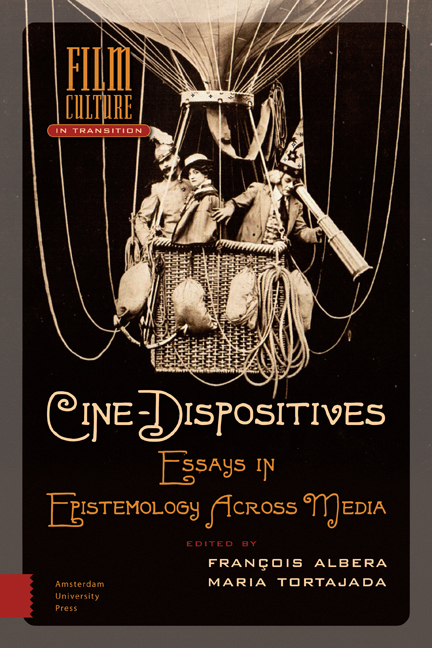The Moment of the “Dispositif”
Published online by Cambridge University Press: 10 February 2021
Summary
If the “dispositif” constitutes a “moment,” it is not so much in accordance with its theoretical unity as with its scattered persistence in film theory. This persistence of the word necessarily brings up the question of its provenance: of which theoretical formation is this notion the standard? The word appeared in the 1970s at the intersection of key concepts – the unconscious, ideology, the signifier – which found the topological model of their functioning in cinematographic technique. Through the primacy given to arrangements, the notion of the “dispositif” fostered a spatial distribution of concepts: the topology of the “scenographic cube” revealed by monocular perspective, the cave-like space of the dark theater, the “other scene” of technique, and so forth. Between concepts and their spatialization, from the imaginary scene to the real scene, analogical relations and semantic slippages developed, altering the outlines of the notion.
At this point, it is difficult to deny that the moment of the apparatus in 1970 has become a theoretical commonplace. Within the already wellcharted field of film theory, Jean-Louis Baudry is an important landmark. Regularly cited to didactic ends to evoke the model of “filmic continuity” from the angle of its deconstruction, Baudry is now part of the doxa. What is remembered from his brief foray in the field of cinema is the conception of a cinematographic technique that, far from being neutral, was held to subject the spectator to the order of fiction. The mention of his name leads by association to the image of a passive spectator plunged in the darkness that characterizes movie theaters. Baudry's work presumably shows us the way followed by a film industry mastering the art of illusionism and constantly seeking artifices susceptible to immerse the spectator completely in the world of fiction.
Still, few theoreticians claim to adhere to this model nowadays. Baudry is often quoted, but primarily because he is a good object for critique. In the issue of Cahiers Louis-Lumière devoted to “dispositifs,” for instance, André Gaudreault and Nicolas Dulac evoke the Baudry/Metz model, but in order to distance themselves from it.
- Type
- Chapter
- Information
- Cine-DispositivesEssays in Epistemology Across Media, pp. 179 - 194Publisher: Amsterdam University PressPrint publication year: 2015

